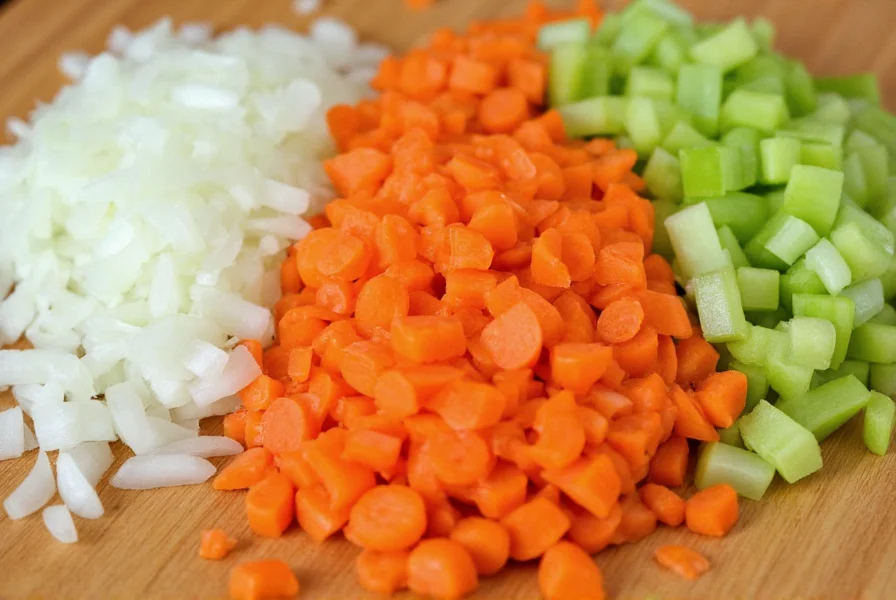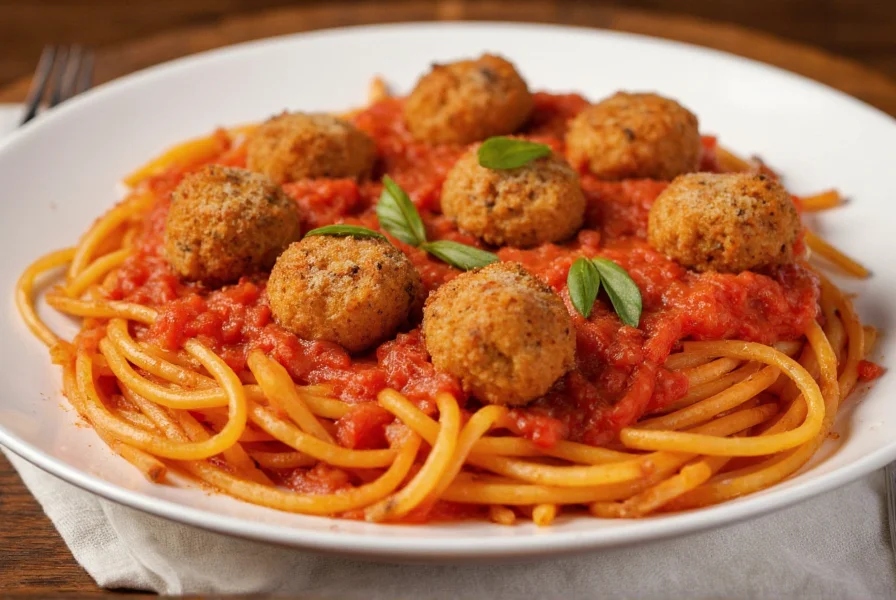Sofritto represents one of the most essential techniques in Italian cooking, serving as the aromatic foundation upon which countless classic dishes are built. Unlike its French counterpart mirepoix (which uses a 2:1:1 ratio of onions, carrots, and celery), traditional Italian sofritto maintains an equal ratio of these three vegetables, creating a balanced flavor profile that's distinctly Italian.
The Essential Components of Authentic Sofritto
Creating proper sofritto requires attention to specific details that distinguish it from similar preparations:
| Component | Traditional Sofritto | Mirepoix (French) | Sofrito (Spanish/Latin) |
|---|---|---|---|
| Vegetable Ratio | 1:1:1 (onion:carrot:celery) | 2:1:1 (onion:carrot:celery) | Varies by region |
| Fat Used | Olive oil | Butter | Olive oil |
| Texture | Fine dice (1/8 inch) | Larger dice | Pureed or finely chopped |
| Cooking Method | Gentle sauté until translucent | Sweating | Fried until golden |
Mastering the Sofritto Technique
The magic of sofritto lies not just in its ingredients but in the precise technique used to prepare it. Chefs should begin by finely dicing equal parts yellow onion, carrot, and celery—approximately 1/8 inch cubes—to ensure even cooking and proper integration of flavors. The vegetables should be cooked slowly in high-quality olive oil over medium-low heat, allowing them to soften and release their natural sugars without browning.
"The key to perfect sofritto is patience," explains Chef Marco Rossi, a third-generation Roman chef. "Rushing the process by increasing the heat causes the vegetables to burn rather than sweat, which fundamentally alters the flavor profile of your entire dish."

Regional Variations Across Italy
While the classic onion-carrot-celery combination represents the standard sofritto found throughout most of Italy, regional variations exist that reflect local ingredients and culinary traditions:
- Northern Italy: Sometimes includes a small amount of pancetta or butter for additional richness
- Southern Italy: May incorporate garlic or tomatoes for a more robust flavor profile
- Sicily: Occasionally features fennel alongside the traditional trio
- Rome: Strictly adheres to the equal ratio of the holy trinity without additions
Common Mistakes to Avoid When Making Sofritto
Even experienced home cooks frequently make errors when preparing sofritto that compromise its effectiveness as a flavor base:
- Incorrect vegetable ratios - deviating from the equal parts formula creates unbalanced flavors
- Improper knife skills - unevenly cut vegetables cook at different rates
- Excessive heat - causes browning rather than gentle sweating
- Rushing the process - sofritto requires 8-12 minutes of careful cooking
- Omitting celery - many substitute with other ingredients, losing authentic flavor
Signature Dishes Featuring Sofritto
Sofritto serves as the essential starting point for numerous iconic Italian preparations. The most notable include:
- Ragù alla Bolognese - where sofritto forms the base for the rich meat sauce
- Minestrone soup - providing the aromatic foundation for this vegetable soup
- Risotto - toasted with rice before adding liquid in traditional preparations
- Osso Buco - the sofritto base enhances the braising liquid
- Polenta dishes - often cooked with sofritto for added flavor complexity
Why Sofritto Matters in Italian Cuisine
The importance of sofritto extends beyond its immediate flavor contribution. When properly prepared, this humble vegetable base undergoes the Maillard reaction and caramelization processes that create hundreds of complex flavor compounds. These compounds then infuse throughout the entire dish during cooking, creating depth that cannot be achieved through seasoning alone.
Food scientists at the University of Bologna have identified over 150 distinct aromatic compounds released during the proper preparation of sofritto, explaining why this technique remains indispensable in authentic Italian cooking despite modern shortcuts and convenience products.
Practical Tips for Home Cooks
For those looking to incorporate authentic sofritto into their cooking routine, consider these practical recommendations:
- Prepare sofritto in larger batches and freeze in ice cube trays for quick use
- Always use fresh, seasonal vegetables for optimal flavor
- Store pre-diced vegetables in airtight containers for up to three days
- Never skip the celery—its unique flavor compounds are irreplaceable
- Use a heavy-bottomed pan to ensure even heat distribution
Conclusion
Sofritto represents far more than just a collection of vegetables—it embodies the Italian culinary philosophy of building flavor gradually and thoughtfully. By mastering this foundational technique, cooks gain access to the authentic taste of Italy's regional cuisines. Whether preparing a simple pasta sauce or an elaborate braised dish, taking the time to properly prepare sofritto will elevate your cooking to new heights of authenticity and complexity.
Frequently Asked Questions
What's the difference between sofritto and mirepoix?
The primary difference lies in the vegetable ratios and cooking fat. Traditional Italian sofritto uses equal parts onion, carrot, and celery cooked in olive oil, while French mirepoix uses a 2:1:1 ratio of onion to carrot to celery and is typically cooked in butter. Sofritto is also finely diced compared to the larger dice of mirepoix.
Can I substitute other vegetables in sofritto?
While purists maintain that authentic sofritto requires only onion, carrot, and celery in equal parts, some regional Italian variations include small amounts of pancetta (in Northern Italy) or garlic (in Southern Italy). However, replacing any of the core three vegetables would create a different preparation, not traditional sofritto.
How long should I cook sofritto before adding other ingredients?
Proper sofritto requires 8-12 minutes of gentle cooking over medium-low heat until the vegetables become translucent but not browned. Rushing this process by increasing the heat will burn the vegetables and compromise the flavor foundation of your dish.
Can I prepare sofritto in advance?
Yes, sofritto can be prepared in advance and stored. Many professional chefs prepare large batches and freeze them in ice cube trays for quick use. Properly stored in an airtight container, fresh sofritto will keep for 3-4 days in the refrigerator, while frozen portions can last up to 3 months.
Why is celery essential in traditional sofritto?
Celery provides unique flavor compounds including phthalides that contribute to sofritto's characteristic aroma and taste. Food science research shows these compounds interact with those from onions and carrots to create over 150 additional aromatic compounds during cooking, which is why substituting celery fundamentally changes the flavor profile.











 浙公网安备
33010002000092号
浙公网安备
33010002000092号 浙B2-20120091-4
浙B2-20120091-4